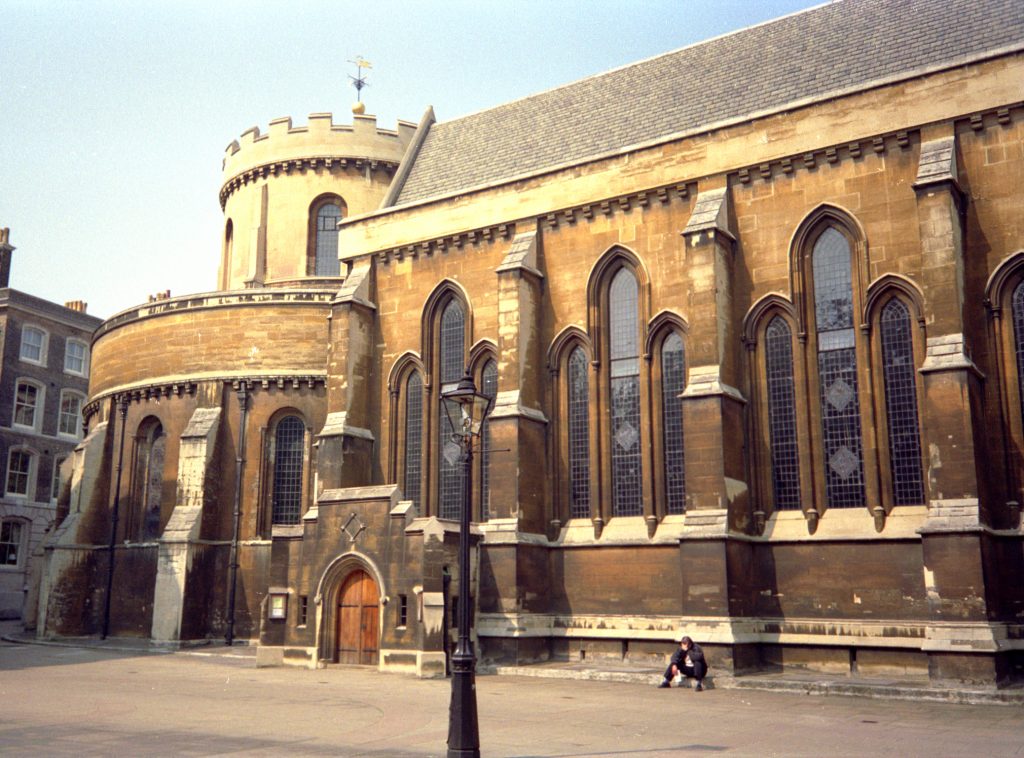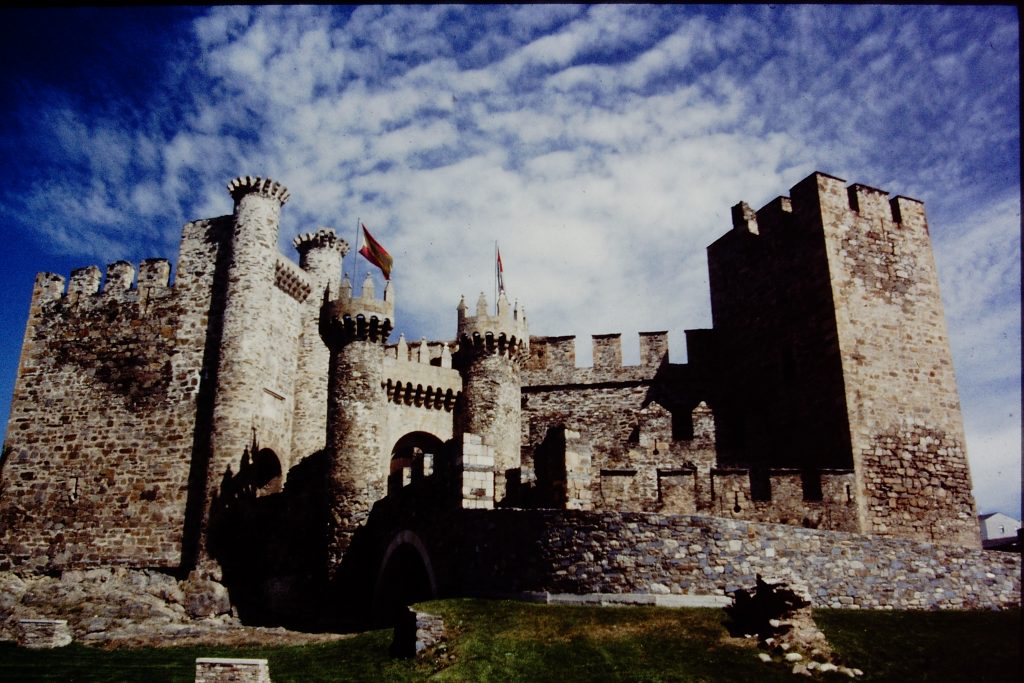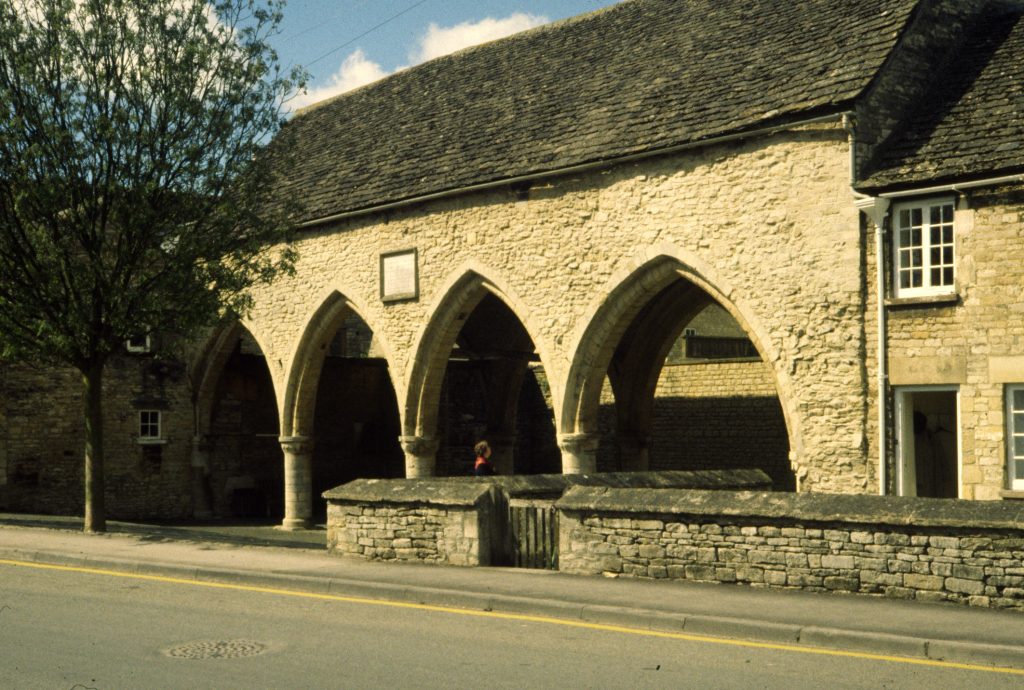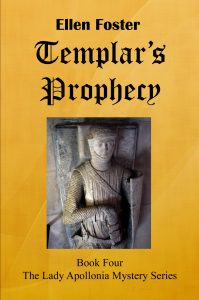 The fourth book in my Lady Apollonia’s West Country Mystery Series is entitled Templar’s Prophecy. The book’s cover, shown on the left, features the medieval tomb effigy of a knight of that order that we found in the Templar Church of the Temple district of London, the exterior of that church is shown above.
The fourth book in my Lady Apollonia’s West Country Mystery Series is entitled Templar’s Prophecy. The book’s cover, shown on the left, features the medieval tomb effigy of a knight of that order that we found in the Templar Church of the Temple district of London, the exterior of that church is shown above.
You can read an earlier posting about the Knights Templar by clicking the May 2017 Archive using the link on the right below. In that month’s archive, go to the May 30 post concerning the Knights Templar. I mentioned there that my husband and I had visited various sites of Templar churches in England as well as in Spain, on the pilgrimage route from France to Santiago de Compostela in northern Spain.
These ancient churches display the great power and wealth which the Templars amassed between the 12th century when they were founded and the early 14th century when they were dissolved by Pope Gregory. Templars were a religious military order founded in 1119 to provide support and protection to pilgrims traveling to the Holy Land. Within twenty years of their founding, a papal bull had exempted the order from local laws, from paying taxes, and from all authority except that of the pope. Such exemptions enabled them to gain the power and amass the wealth mentioned earlier.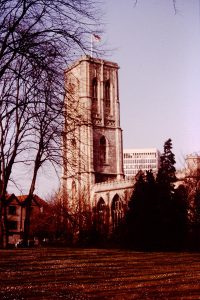
Another example of a Templar church in England is the one in ruins in Bristol as shown on the right. Similarly, we encountered connections with the Templars in Scotland in Roselyn Chapel, south of Edinburgh. We also found an ancient Templar construction in a castle in Ponferrada, Spain, shown at the end of this posting. In addition to churches and castles, we encountered place names such as Templecombe in Somerset, England. This village, northwest of Yeovil, became an administrative center for the Templars in 1185 to manage their lands in the southwest of England.
Although the origins of the religious order in the twelfth century were military, no more than ten percent were knights who were well respected for their fighting skills. They wore a distinctive white mantle with a red cross. The other noncombatant members of the order managed a large economic infrastructure throughout western Christendom. Their wealth and power grew over the decades, resulting in over a thousand Templar facilities scattered across Europe and in the Holy Land.
 The power of the crusaders in the Holy Land waxed, then waned between the end of the eleventh century and the end of the thirteenth century, coming to an end at the Siege of Acre in 1291. In Templar’s Prophecy I introduce a fictitious young crusader who was captured at Acre. His grandson plays a role in my story which is set a century later. After losing their fortification at Acre, the Templars military function was significantly reduced, but their power and wealth were well established.
The power of the crusaders in the Holy Land waxed, then waned between the end of the eleventh century and the end of the thirteenth century, coming to an end at the Siege of Acre in 1291. In Templar’s Prophecy I introduce a fictitious young crusader who was captured at Acre. His grandson plays a role in my story which is set a century later. After losing their fortification at Acre, the Templars military function was significantly reduced, but their power and wealth were well established.
Various monarchs of the period borrowed money from the order, and this led to their downfall. King Philip IV of France destroyed them in his country in 1307. With the cooperation of a French pope, he charged them with heresy and saw to it that their leader was martyred, largely so that he did not have to repay his huge debt to them. A few years later the religious order was destroyed, so it was difficult to include Templars in a story set in the late 14th century. But if you go back and read my posting of February 8, 2021, the prologue of Templar’s Prophecy, you will gain some insight in how I attempted to do it.
See you next time.
